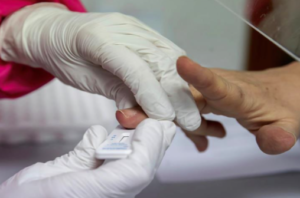
Spain has updated its coronavirus test protocols for travellers from “high-risk” countries. Airline passengers – including those flying into Corvera Airport Murcia – can substantiate a negative COVID-19 diagnosis of active infection with a Transcription-Mediated Amplification (TMA) test carried out 72 hours before their arrival.
A resolution that came into force on 23 November, originally only permitting a negative PCR test, has been amended to include the TMA test which, according to the official government website, “is a molecular technique to detect the viral RNA with a level of reliability similar to that for the detection of SARS-CoV-2”.
This new resolution came into force on Thursday 10 December, and it also establishes that children under the age of six will not be required to show a negative result to enter Spain. The diagnostic test of active infection may be written in French or German, in addition to Spanish or English. Otherwise, the substantiating document must be accompanied by a translation into Spanish by an official body.
The Health Control Form that passengers must fill in before their arrival in Spain includes a question asking if they have had a negative diagnostic test carried out within 72 hours prior to their arrival in Spain. Passengers may be asked to produce this test result at any time. In addition, health controls performed on all inbound passengers at arrival points – such as temperature and visual controls – are being maintained.
 Travel Safe Campaign
Travel Safe Campaign
The Spanish government has presented a new communication strategy under the slogan “Travel Safe” to highlight health security measures in Spain. According to minister for industry, trade and tourism Reyes Maroto, the aim of the campaign is “to position Spain’s tourism brand as a prescriber of safety on trips and contribute to generate confidence in tourism so that inbound tourists once again come to our country.”
“Travel Safe” is a 360-degree communication strategy based on informative content related to safety and precautionary measures, and developed through a microsite with information for travellers in Spanish and nine other languages.
An interactive map of Spain includes a technological application (in Spanish) which updates information on a daily basis, regarding entry requirements to Spain and measures adopted in each autonomous region, including information on regional border closures, mobility restrictions, restaurant capacity and other tourist services.
The microsite also offers official information on measures imposed by other countries for travellers arriving from Spain (diagnostic test requirements, quarantine, etc.).

 Travel Safe Campaign
Travel Safe Campaign